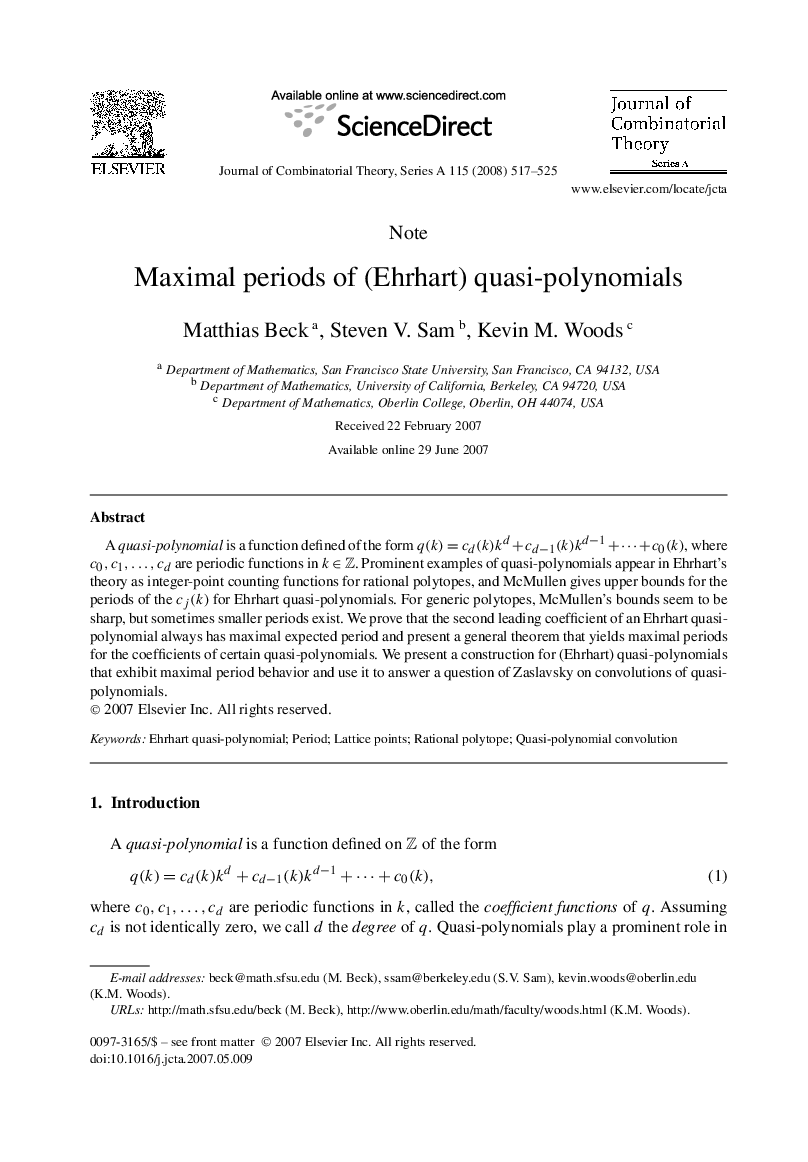| Article ID | Journal | Published Year | Pages | File Type |
|---|---|---|---|---|
| 4656184 | Journal of Combinatorial Theory, Series A | 2008 | 9 Pages |
A quasi-polynomial is a function defined of the form q(k)=cd(k)kd+cd−1(k)kd−1+⋯+c0(k), where c0,c1,…,cd are periodic functions in k∈Z. Prominent examples of quasi-polynomials appear in Ehrhart's theory as integer-point counting functions for rational polytopes, and McMullen gives upper bounds for the periods of the cj(k) for Ehrhart quasi-polynomials. For generic polytopes, McMullen's bounds seem to be sharp, but sometimes smaller periods exist. We prove that the second leading coefficient of an Ehrhart quasi-polynomial always has maximal expected period and present a general theorem that yields maximal periods for the coefficients of certain quasi-polynomials. We present a construction for (Ehrhart) quasi-polynomials that exhibit maximal period behavior and use it to answer a question of Zaslavsky on convolutions of quasi-polynomials.
